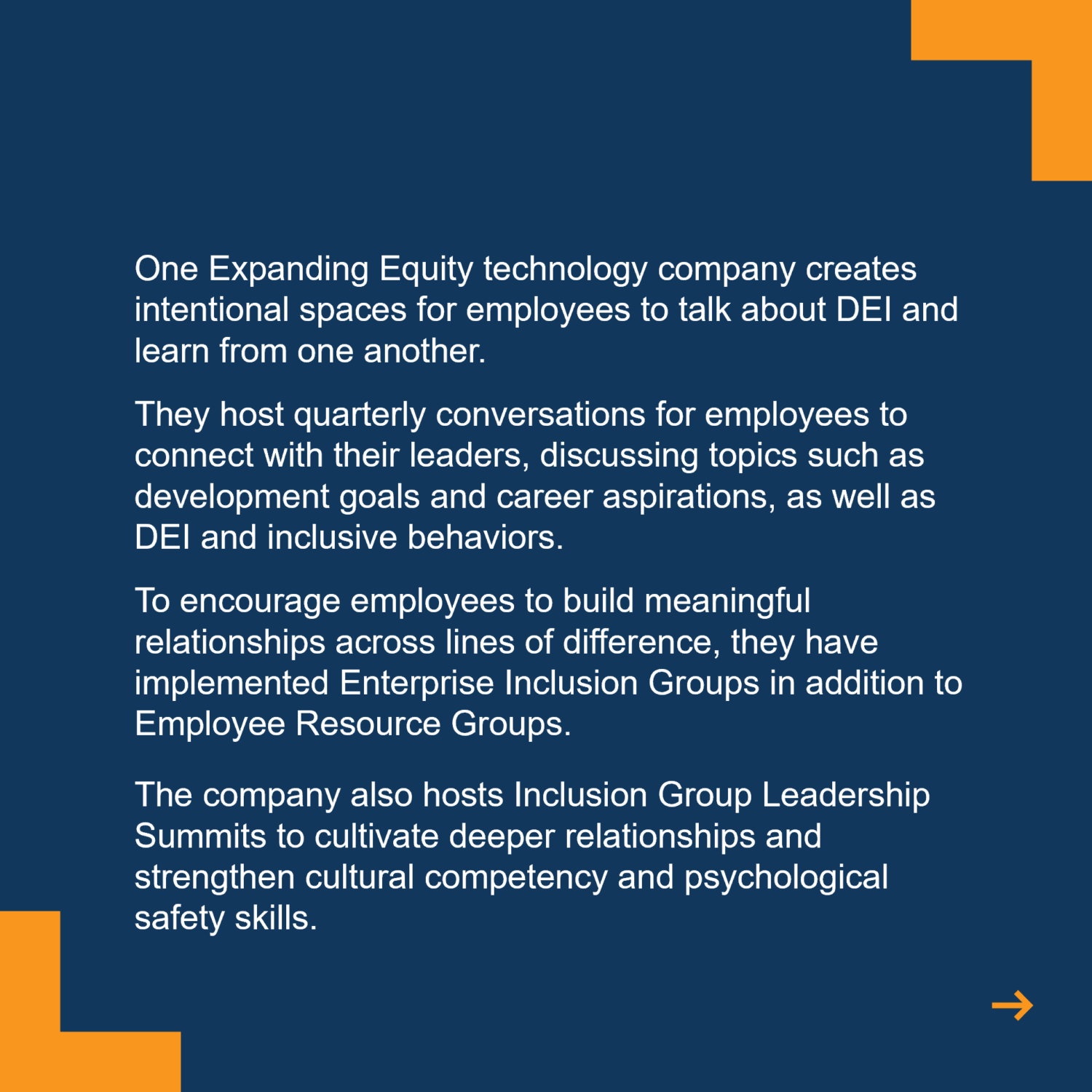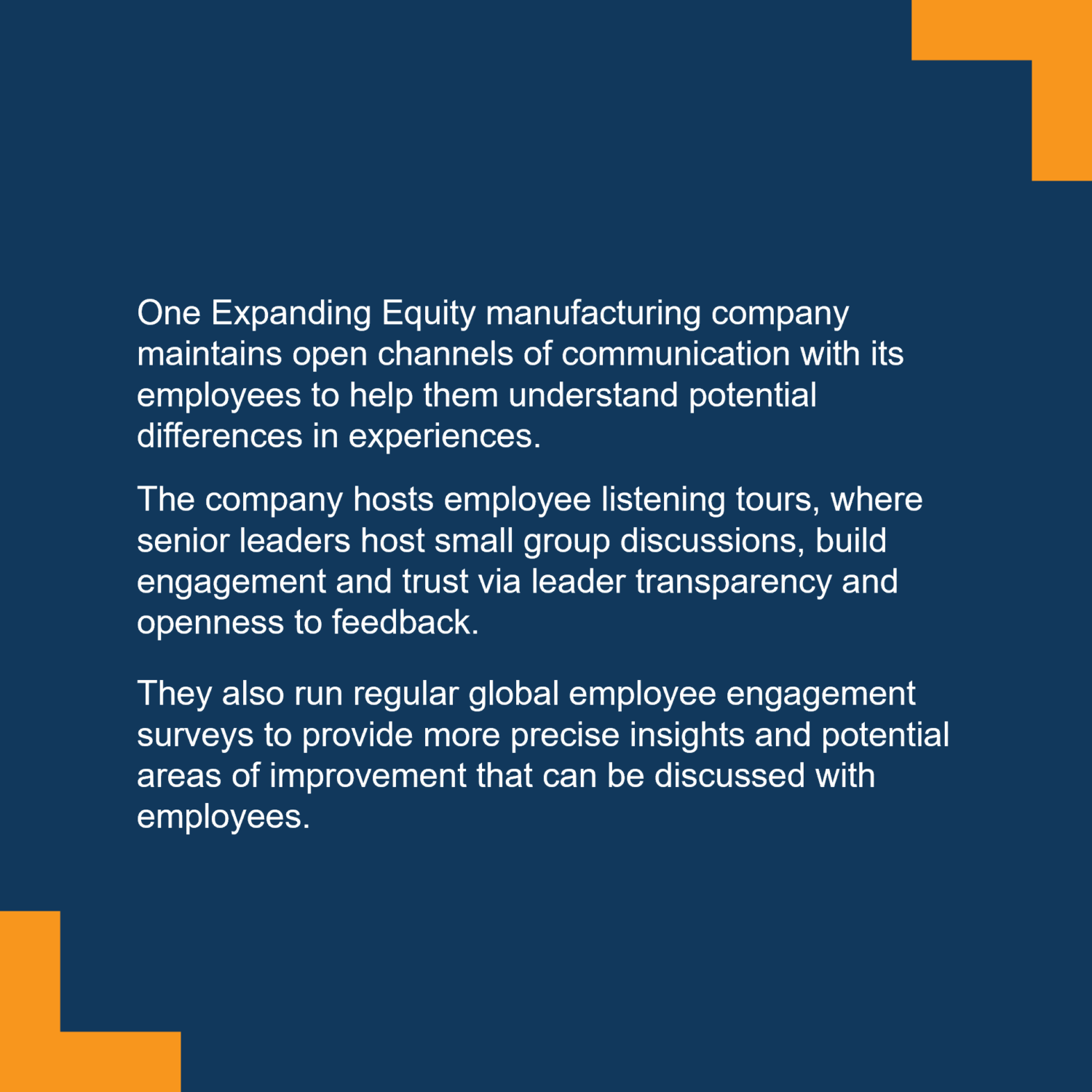Inspired by participating companies in the Expanding Equity network, this post is the second of four in a series lifting up actions leaders and organizations can take to accelerate inclusion and belonging in the workplace. (See WKKF’s Inclusion & Belonging Guidebook for more how-to information.)
Exhibit 1: Four action areas for improving workplace inclusion and belonging
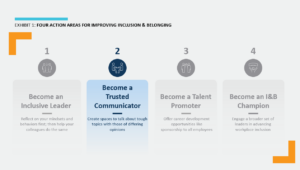
Every employee, no matter at what level of the organization, wants to be seen and heard, valued and appreciated, not just for what they do, but who they are. We all devote an incredible amount of time and energy to our jobs, and it gives us extra energy and motivation when we feel that we’re an important part of the team and a crucial asset to the work. Employees who perceive the workplace as supportive feel more psychologically safe to bring their best selves forward and make greater contributions to their organization.
Leaders at all levels of an organization (including senior leaders, middle managers, and frontline supervisors) are vitally important in creating these safe and supportive work environments for their teams and colleagues. It starts and ends with communication, and leaders showing up consistently and intentionally on a day-to-day basis and on a person-to-person basis. All leaders need to remember that while what you say is definitely important, when you’re saying something with emotion, only 7% is expressed through your words; 38% through your tone of voice, and 55% through your body language. Leaders taking the time to ask, listen, validate and encourage their teams on a regular basis cannot be overstated. We continue to hear stories of employees who are fiercely loyal to leaders who have worked through challenges in a respectful way or who “have their back” during a challenging time.
For many employees, a supportive workplace is one in which they are able to share honestly about their experiences at work and outside of work (assuming that an appropriate level of trust has been established); freely express their ideas and opinions about plans and projects; and have respectful discussions and debates with their supervisors and colleagues, especially around challenging topics. This dynamic, when implemented successfully, enables employees to connect across lines of difference and forge deeper working and personal relationships, building a solid foundation on which the team can operate and rely on during tough times.
The reality of today’s workplace is that it’s a place where we often interact with people who are different from us (by race, gender, sexual orientation, educational background, and political ideology), which can be both a cause of conflict and a chance for connection. And people leaders are faced with expectations of having to bring about greater inclusion, not just better performance, on their teams. But many leaders say that they are not sure how to talk about “tough topics” at work—they don’t want to say the wrong thing, don’t know what to say that will be positive and productive and are afraid of being caught off guard by a comment or a question.
In these instances, it’s important for leaders to think through and plan out their group or 1:1 meetings with their teams. Here are some guideposts:
- Create Space: Give your team time and space to express their thoughts on current events or contentious issues. Clarify that it’s also okay to not share.
- Acknowledge: Show that you understand how difficult it can be to process these events or deal with these issues.
- Affirm: Demonstrate that you are taking in individual perspectives with deep listening.
- Personalize: Share your own authentic reactions but don’t make assumptions or generalizations about how others feel.
- Offer Support: Let your team know you stand ready to help and support them today, tomorrow, and going forward.
- Reinforce Values: Remind people of your personal and your organization’s commitment to employee wellbeing, values and diversity, equity and inclusion.
- Highlight Resources: Point people to your organization’s DEI and mental health resources and programs, as well as online guides for additional information and support.
By equipping these leaders to more confidently engage employees during tense moments, it will help to defuse some of that tension, leading to greater awareness and hopefully understanding that will improve the broader team culture. Oftentimes, we don’t know what to do about the division and conflict we witness in society and often experience in our organizations, but people leaders have an opportunity to address and counter that on a daily basis with how they and their teams show up with each other.
What the Evidence Says
Companies can create more safe spaces for employees to engage in constructive dialogue on tough topics. While tough topics can range from interpersonal to societal, research shows that it is especially true when the topic is diversity: people are generally uncomfortable talking about identity in the workplace. Less than 20% of surveyed employees indicated that open discussions about these topics occurred often or almost always (Exhibit 2).
Exhibit 2: Regardless of race or ethnicity, most employees do not openly discuss DEI issues with their coworkers
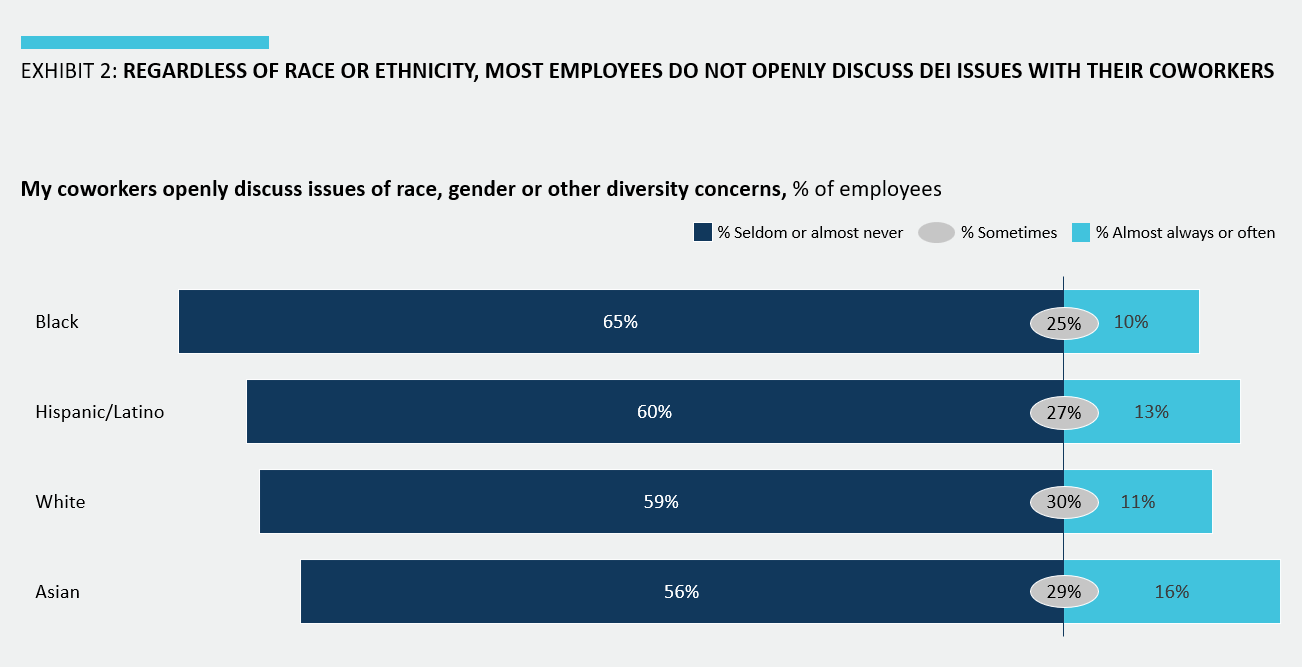
Compared with White workers, Black, Hispanic/Latino and Asian employees are less likely—by 18%, 10% and 8%, respectively—to perceive coworkers as open to “listen[ing] to ideas and opinions that are different from their own” (Exhibit 3). This finding highlights the need for companies to focus particularly on equipping leaders with the tools to effectively facilitate conversations around topics related to race, immigration, politics, etc.
Exhibit 3: Employees of color are less likely to feel their coworkers are willing to listen to different ideas and opinions
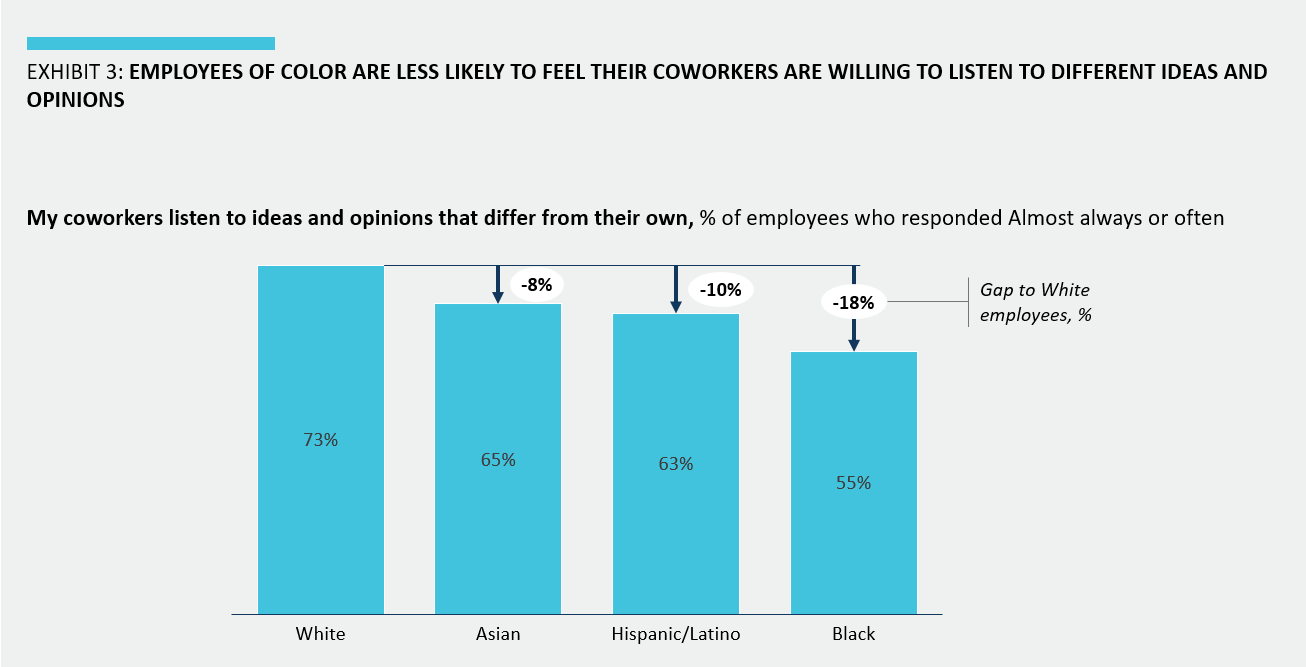
As leaders build the muscle to facilitate these conversations, they can start small by curiously engaging colleagues in one-on-one conversations and building towards team talks and larger forums. For many employees, having the space to share more authentically about their experiences, even in a one-on-one or small setting, helps them feel included and supported, and also helps leaders uncover more of what their employees need to reach their full potential at work.
Putting It into Action:
These Expanding Equity companies are helping leaders and employees build trust in their communication and work experiences.
Resources You Can Use
As we continue to experience new tragedies, controversies and hotly debated topics, there’s no shortage of opportunity to build our capacity to create spaces for meaningful conversation on tough topics.
For inspiration on how to tactically structure these conversations, reference:
- How to practice Conocimiento with your team (Expanding Equity)
To decide when and how to engage on specific topics, take inspiration from these examples of resources published to help leaders navigate specific current events:
- How to talk with your team about the violence at the U.S. Capitol (Harvard Business Review)
- Tips for discussing the Israel-Gaza crisis at work (Forbes)

